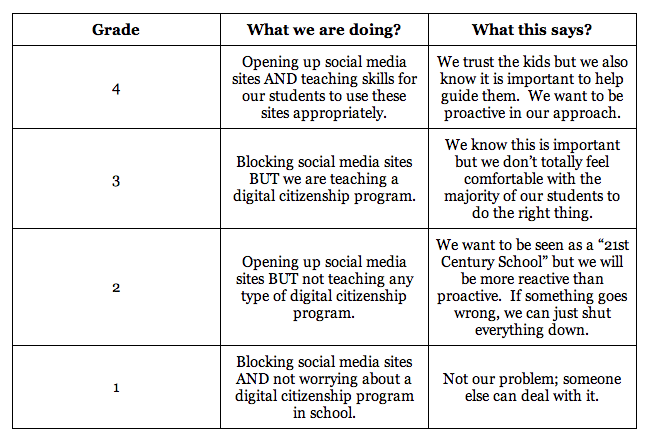
cc licensed ( BY ) flickr photo shared by Walmart Corporate
This past week, I worked with a small group of educators on becoming a “Networked Educator“, and we had some great conversations about how social media is changing a lot of what we do in schools. Within the group, there were about four teachers from one high school, who came to learn together and asked questions about how they could move their school to the “next level” in how they are sharing and learning with not only each other, but students as well. They told me that felt that they were in some ways behind as a school, but they were making progress.
One of the ways that they felt they were making progress was by having a school Twitter account to share what is happening at with their community. This is new to them and they are learning along the way, but the teachers admittedly felt that the school needed to do more to help their students. As I checked out their Twitter account, I saw the “Follower Suggestions” and noticed two accounts that looked to be student Twitter accounts. I asked the teachers if they were their students, they said yes, and asked permission to look at their tweets (which are totally public to the world) in front of the group, and they said yes, knowing that they probably weren’t going to like what they were about to see.
They didn’t like it at all. They were actually mortified.
We looked at both students and many of the tweets were sexist, derogatory, and just outright offensive. It made the group cringe and the teachers were embarrassed because we found it by simply looking up the school Twitter account. There was no searching for students; it was just automatically linked because they followed the account.
When I asked the teachers if they knew the student personally, they said yes, and said that both of them were great kids. I actually had no doubt about that. When I was a kid and was with my closest friends, I might have said similar things. To many kids now, they think that being on Twitter is, in some ways, being with their closest friends. I remember one student in our school was blown away that I even knew what Twitter was and that we saw their account (they used a hashtag that all educators were following).
Do I ever swear? Yup.
Do I ever swear on Twitter? Nope.
We have to talk with our kids and be honest with them that we are not perfect as individuals either, but we have to understand what is meant to be public and what is private.
Do we work with kids and really talk about the implications of what this can lead to? I don’t want to think that either student’s life will be ruined by their tweets, but I know that if they continue to go on this way, I would hate to think that they end up like Alexandra Wallace, who did a very dumb thing on YouTube which then quickly went viral. The question that I have with her scenario is, “did a teacher ever work with this student to talk about the possible consequences of her actions?” I kind of doubt it.
So as we talked about next steps for their school, they had a concern that the view would be, “Let’s just shut down our school account so this won’t happen again.”
#Fail
I was quickly reminded of this Dan Hasler post on social media and driving and his three main thoughts on how we do social media wrong in schools:
1. Driving lessons would be taught by adults (teachers or parents) with little or no experience of driving.
2. Driving lessons would only focus on what not to do.
3. Driving lessons would NEVER take place in an actual car.
So building on Dan’s thoughts and reflecting on this experience, I thought about a “rubric” of what schools could be doing in working with students to help them navigate these murky digital waters:
I do believe that we need to work with our students to get them to the point of “Digital Leadership” and the “Sincere Compliments” video should be a standard we guide our students toward. Nothing works 100% but we need to really be proactive as educators in our work with students, not simply worry about covering our butts. If we are really wanting to do what is best for kids, shouldn’t we be at the top (or at least working towards) the top?
Where is your school on this continuum? Would you swap 2 and 3?
